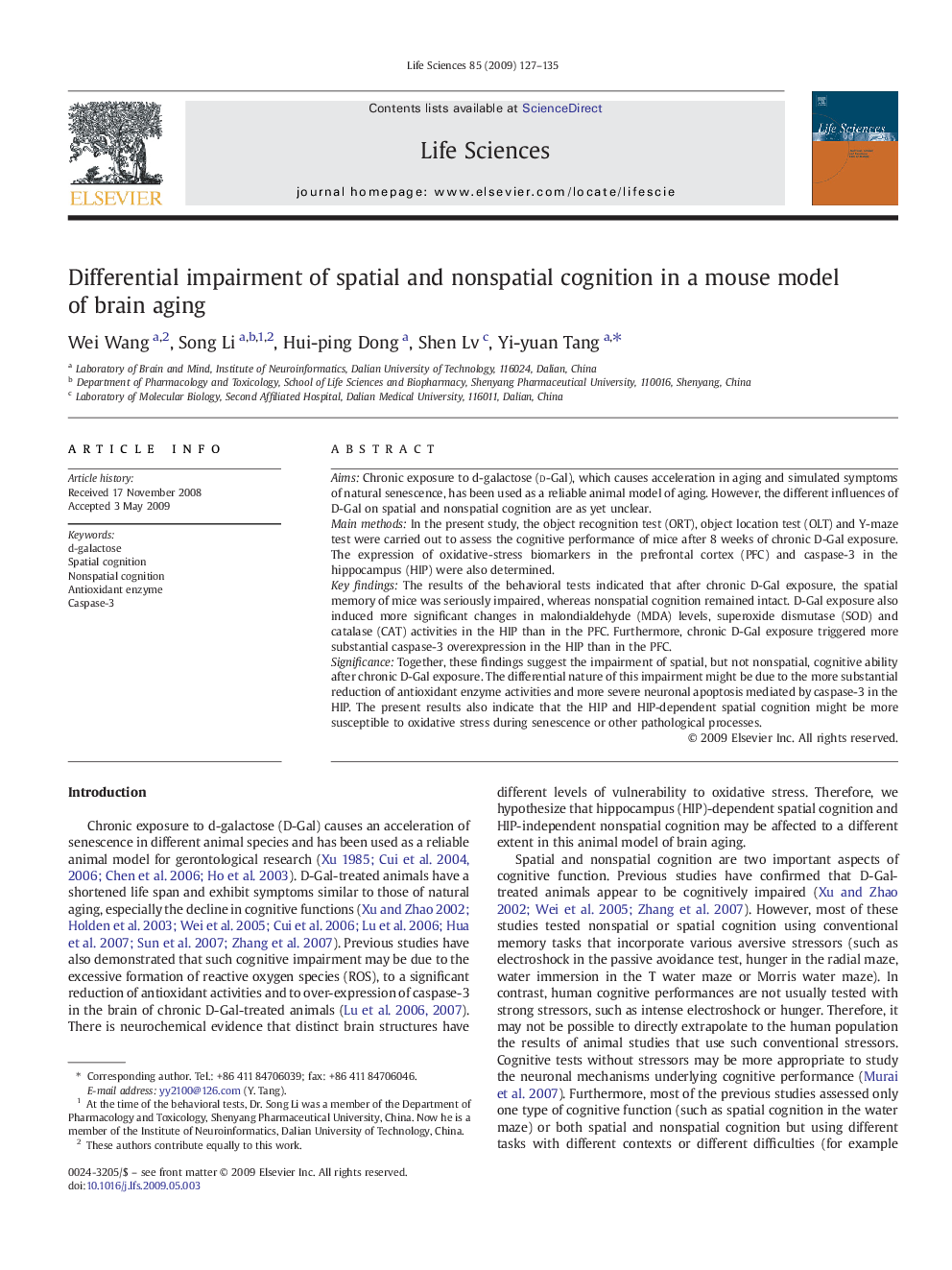| Article ID | Journal | Published Year | Pages | File Type |
|---|---|---|---|---|
| 2552745 | Life Sciences | 2009 | 9 Pages |
AimsChronic exposure to d-galactose (D-Gal), which causes acceleration in aging and simulated symptoms of natural senescence, has been used as a reliable animal model of aging. However, the different influences of D-Gal on spatial and nonspatial cognition are as yet unclear.Main methodsIn the present study, the object recognition test (ORT), object location test (OLT) and Y-maze test were carried out to assess the cognitive performance of mice after 8 weeks of chronic D-Gal exposure. The expression of oxidative-stress biomarkers in the prefrontal cortex (PFC) and caspase-3 in the hippocampus (HIP) were also determined.Key findingsThe results of the behavioral tests indicated that after chronic D-Gal exposure, the spatial memory of mice was seriously impaired, whereas nonspatial cognition remained intact. D-Gal exposure also induced more significant changes in malondialdehyde (MDA) levels, superoxide dismutase (SOD) and catalase (CAT) activities in the HIP than in the PFC. Furthermore, chronic D-Gal exposure triggered more substantial caspase-3 overexpression in the HIP than in the PFC.SignificanceTogether, these findings suggest the impairment of spatial, but not nonspatial, cognitive ability after chronic D-Gal exposure. The differential nature of this impairment might be due to the more substantial reduction of antioxidant enzyme activities and more severe neuronal apoptosis mediated by caspase-3 in the HIP. The present results also indicate that the HIP and HIP-dependent spatial cognition might be more susceptible to oxidative stress during senescence or other pathological processes.
